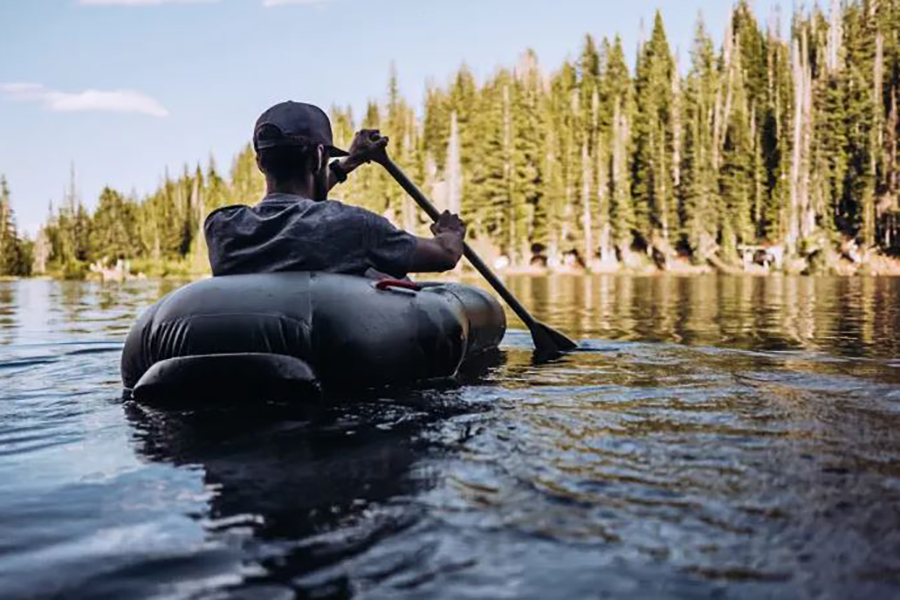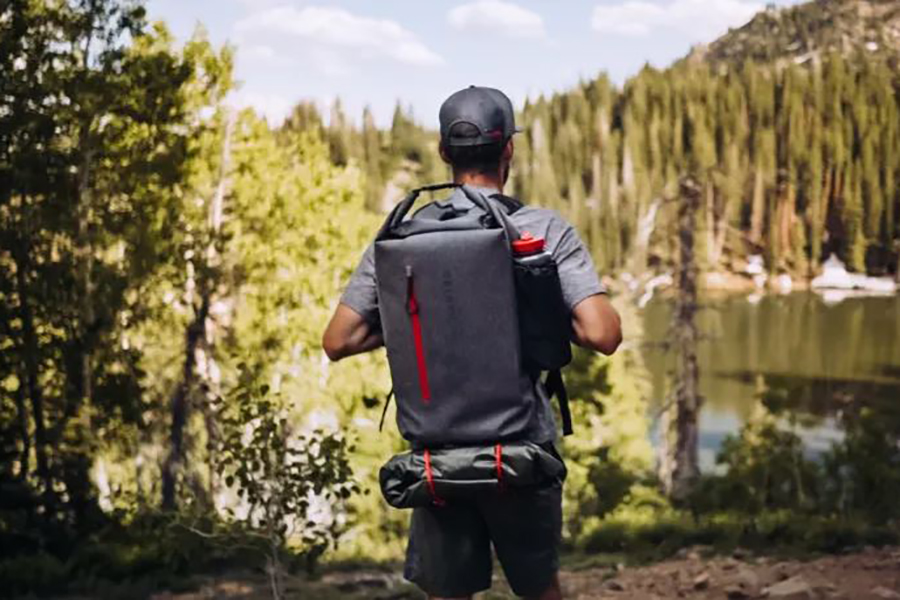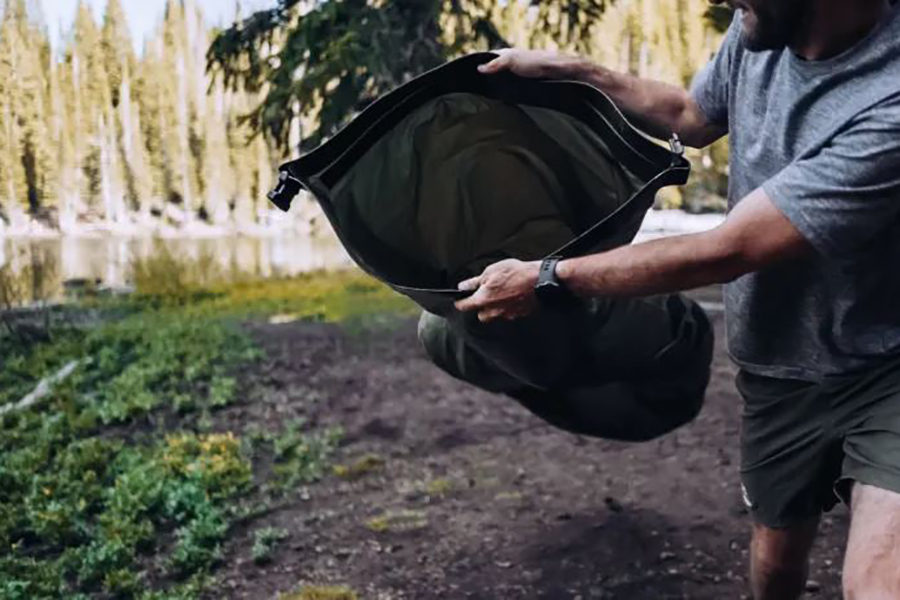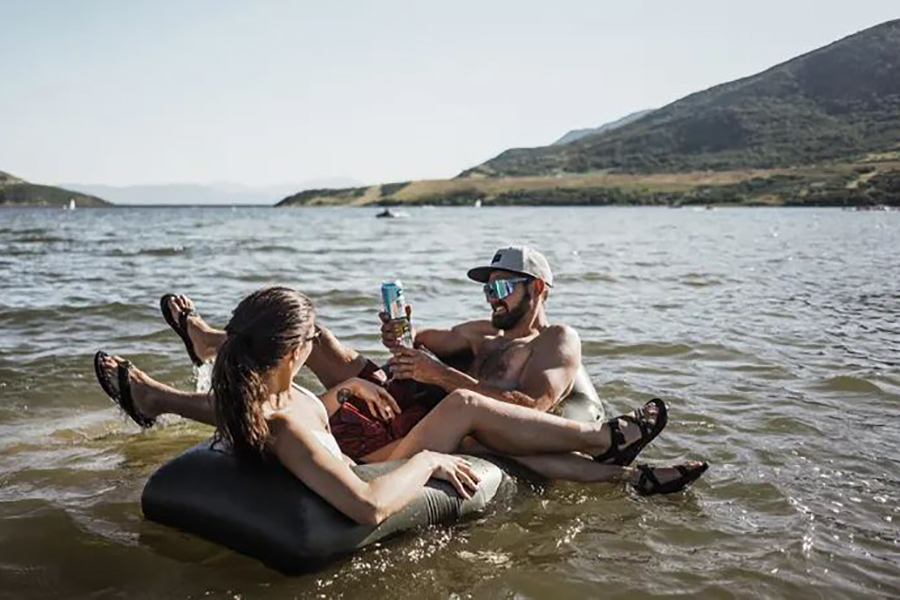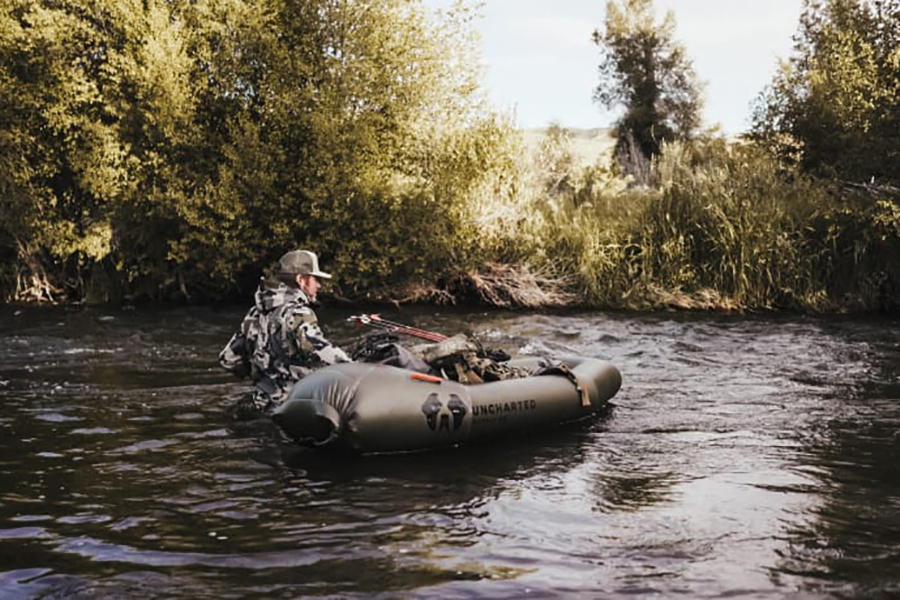If Into the Wild taught us anything, it’s that toxic wild edibles can look suspiciously like non-toxic wild edibles. If it taught us another thing, however, it’s that a surprise river crossing can ruin your day. Whether you like your outdoor adventure on the extreme side or just prefer to be prepared with a bug-out bag to survive the apocalypse, having an ultra-portable emergency raft in your arsenal is never a bad idea.
Uncharted Supply touts its clever new Rapid Raft as “the lightest and most packable raft to ever be made available to the public.” While Guinness doesn’t keep official records of such things, we’re inclined to believe them. At just three pounds, the raft can be thrown into a survival bag or the trunk of a car and forgotten about until it’s needed. Once deflated, it compresses to a 5-inch by 15-inch footprint — roughly the size of a loaf of bread.
Compact and lightweight, of course, needn’t mean flimsy. The six-foot raft can support up to 400 pounds. Nylon Oxford TPU Laminate materials ensure the floor and bottom can withstand rocks and other debris found in most rivers. An oversized rear volume helps balance the raft’s load, while a rockered front design minimizes the chance of capsizing and guarantees a more stable ride.
However, it’s not just the Rapid Raft’s light weight that sets it apart from almost any competing product costing twice as much. It was designed to fulfill a military order for quick water crossings with rapid deployment, inflation, and repacking in the field. The patented inflation mechanism works like a traditional dry bag. Once unrolled, the rider “captures” the air inside the bag with a roll-top closure that negates the need for a separate pump or inflation sack. A one-way air valve allows for topping up or releasing the raft’s pressure. As this video demonstrates, the raft can be deployed in less than 40 seconds.
Over the last few years, Utah-based Uncharted Supply has made a name for itself with several successful crowdfunded campaigns and the public backing of Shark Tank’s Robert Herjavec. Their catalog of survival and emergency-related products includes the SEVENTY2 Survival System. We previously ranked the ready-made, 72-hour survival pack among our list of the world’s best bug-out bags.
The Rapid Raft is now available for pre-order on Indiegogo. Early bird adopters can score one for $299 before it officially goes on sale with a $399 price tag. Uncharted Supply expects to begin shipping in November 2019.
